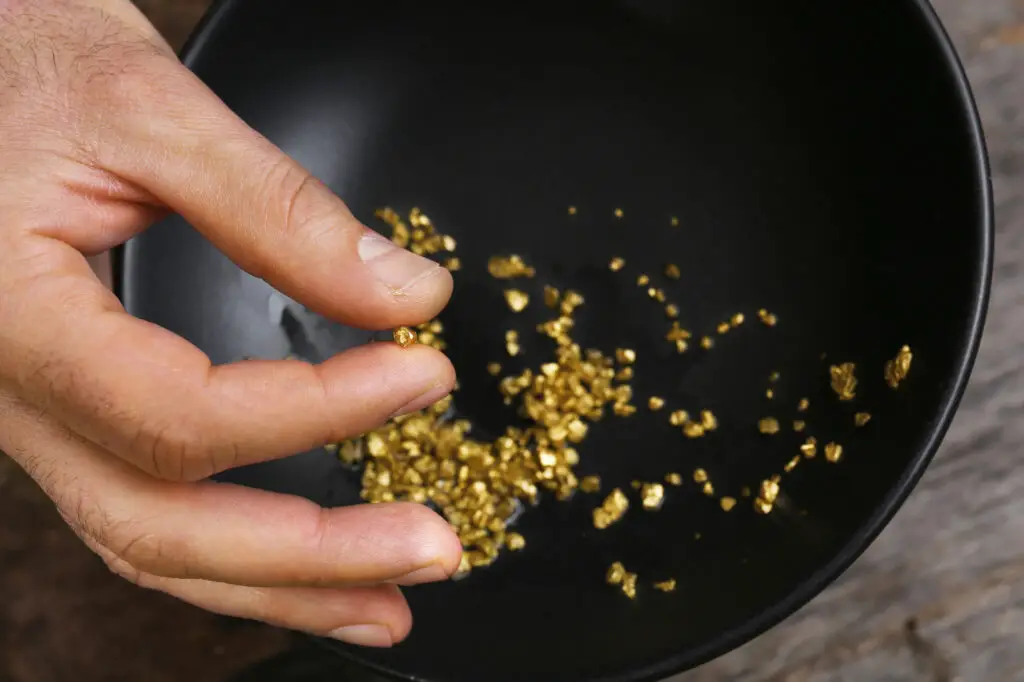For those with a spark of adventure in their heart and a passion for history, the search for gold can become a captivating endeavor. Alabama, the “Heart of Dixie,” might not be the first place that springs to mind when one thinks about gold panning, but you’d be surprised at what treasures lie hidden in its streams and riverbeds. With a unique blend of rich history and natural beauty, Alabama’s gold rush era comes alive for those willing to get their hands wet.
Gold panning in Alabama, as in many parts of the United States, dates back to the 19th-century gold rush. Struck by the allure of gold, many hopeful prospectors flocked to the South in hopes of making their fortune. Alabama’s gold rush began around 1830, even predating the more famous California gold rush. This fascinating period in the state’s history is etched into the trails of the gold-bearing creeks and rivers that still meander through Alabama’s landscape today.
This blog post is a treasure map for those seeking to indulge in a pastime that combines the thrill of discovery, the serenity of nature, and the allure of history. So, grab your gold pan and join us as we guide you to some of Alabama’s best-kept secrets. From the historic gold-laden regions of the east to the charming creeks in the heart of the state, Alabama has an abundance of sites where you can enjoy panning for gold, just as the early prospectors did nearly 200 years ago.
Whether you’re an amateur enthusiast or a seasoned prospector, Alabama’s diverse panning locales offer a rich and rewarding experience. Gold panning here is more than just a hobby; it’s a window to a bygone era, a testament to the enduring human spirit, and a testament to the timeless allure of gold.
So let’s embark on this golden adventure together. Let’s dig into the past, sift through the sands of time, and maybe, just maybe, find that glimmer of gold that has inspired thousands before us. Welcome to the golden journey through Alabama, a journey filled with history, beauty, and the promise of sparkling treasure. Let’s pan in Alabama!

What Is The History Of Gold Panning In Alabama?
The history of gold panning in Alabama is a fascinating chapter of the state’s past, tied to the national narrative of the American gold rushes of the 19th century.
Gold in Alabama was first discovered in 1830 around Chilton County, near the Coosa River, a full decade before the famous California Gold Rush. This discovery triggered Alabama’s gold rush, which attracted thousands of miners and prospectors hoping to strike it rich. The towns of Goldville and Arbacoochee flourished as booming mining centers, with Goldville once boasting a population greater than Birmingham’s today.
Alabama’s most profitable gold areas were in the east-central region, near the Georgia border. Cleburne, Talladega, Clay, Coosa, and Randolph Counties were among the major gold-producing regions. Gold was primarily found in lode deposits (veins of ore in bedrock), and placer deposits (loose pieces of gold or gold-bearing sand or gravel in creek beds) were also mined.
Gold mining in Alabama underwent several cycles of boom and bust throughout the 19th and early 20th centuries. One major revival happened in 1880 when lode stone mining replaced placer mining, and the industry flourished until the early 1900s. Another revival occurred during the Great Depression when increased gold prices drove miners back to the old mining districts.
However, with time, the mining operations ceased as gold became harder to find, and the industry shifted its focus to more profitable ventures, such as iron and coal. By the mid-20th century, gold mining in Alabama was largely a thing of the past.
What Are The Rules And Regulations For Gold Panning In Alabama?
While the thrill of panning for gold can be exciting, it’s essential to understand the rules and regulations in place to protect both the land and the hobbyist. Here are some key points for gold panning in Alabama:
Land Ownership: Before you begin panning, it’s crucial to determine who owns the land. If the land is privately owned, you must obtain permission from the owner before you start. If the land is public, check with local or state authorities about any permits or restrictions.
National Forests: Many of the best places to pan for gold in Alabama are located in the national forests. The United States Forest Service allows gold panning in the national forests, but there are specific rules you must follow. Typically, panning is allowed on a recreational, non-commercial basis. Digging or disturbing the surface is generally prohibited, and you should always refill any holes you dig.
State Parks: Many state parks in Alabama prohibit gold panning due to concerns over environmental impact. Be sure to check the regulations of the specific park you’re interested in.
Endangered Species and Habitats: Certain areas may be off-limits to protect endangered species or habitats. Always respect these restrictions.
No Mechanical Equipment: Alabama law generally prohibits the use of mechanical equipment for mining. This includes dredges, sluices, and other equipment. Gold panning in Alabama is usually limited to hand tools and gold pans.
Clean Up After Yourself: This rule goes without saying, but always clean up after yourself. Leave no trace of your activities to preserve the natural beauty of the area for others to enjoy.
Archaeological and Historic Sites: Disturbing archaeological or historic sites is against federal law. If you come across any such site, respect the law and leave it undisturbed.
While this list covers the basics, the specifics can vary from one location to another. It’s always a good idea to contact the local Bureau of Land Management, Forest Service, or other relevant authorities to get the most accurate and up-to-date information. Happy and responsible panning!
Best Creeks And Rivers For Panning In Alabama
In Alabama, the tradition of gold panning continues with several sites that offer promising opportunities for gold seekers. Here are some of the best creeks and rivers for gold panning in Alabama:
Chulafinnee Creek: Located near the town of Chulafinnee in Cleburne County, this creek has been a significant gold source since the early gold rush days. It’s a favorite among prospectors, yielding both gold nuggets and flakes.
Wesobulga Creek: Also in Cleburne County, Wesobulga Creek is a historically rich gold creek. It’s a tributary of the Tallapoosa River, where gold can also be found.
Tallapoosa River: Once the home of significant gold mining operations, the Tallapoosa River spans several counties and offers opportunities for panning along its banks.
Gold Branch: Part of the Little River system, Gold Branch has a history of gold findings. It’s located within the Choccolocco Wildlife Management Area in Cleburne County.
Cornhouse Creek: This creek in Randolph County has been a productive site for placer gold. It’s named after an old Indian corn house that once stood nearby.
Hillsboro Branch: Located in Clay County, Hillsboro Branch is another historically significant site. Many gold mines operated in this area in the 19th century.
Coosa River: The Coosa River was a significant area during Alabama’s gold rush, with gold being found in its tributaries and minor streams.
Remember, before you start panning, always make sure to follow the rules and regulations regarding gold panning in the area. Check land ownership, obtain necessary permissions, and respect the environment. Good luck with your gold prospecting journey!

